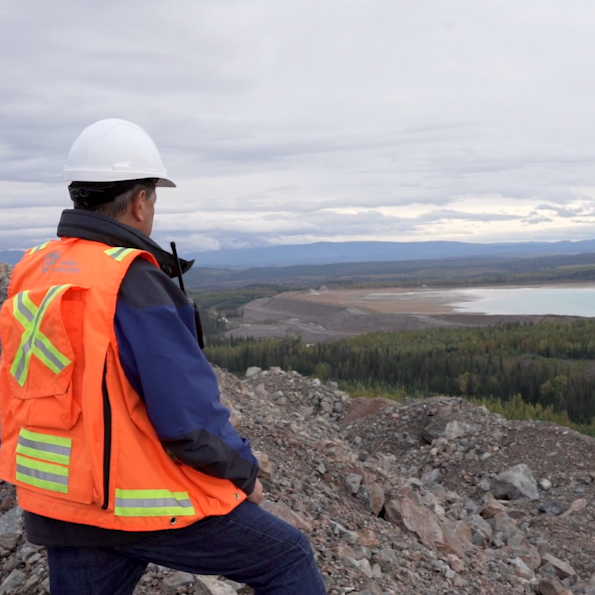First, what are tailings?
Tailings are essentially crushed rock, and are the leftover material after the minerals containing the “elements of interest” have been removed. At Mount Polley the elements of interest are copper, gold and silver. The minerals containing the copper, gold and silver are released by crushing and grinding the mined rock down to sand and silt sized particles.
At Mount Polley, a process known as flotation is then used to separate the important copper-bearing minerals from the rest of the crushed ground rock. The remaining crushed rock is considered waste (gangue) and is what makes up the tailings. No cyanide is used at Mount Polley.
Read more about Tailings on the Mining Association of BC’s website here.
What
is the in the Mount Polley tailings?
At Mount Polley, the valuable elements are copper, gold and silver and they are
found most commonly in the sulphide minerals, chalcopyrite and bornite. The
leftover minerals found in the waste are piped as a slurry with water to the
tailings storage facility. [ref: Community Updates 2017 Issue 3; 2016 Apr Issue 2]
The rocks that are mined at Mount Polley are around 200 million years old and represent ancient volcanic rocks and magma that intruded into these rocks. The intrusive rocks host the copper, gold and silver mineralization.
Let’s talk rocks!
The rocks which host most of the ore are made up primarily of the minerals orthoclase (potassium feldspar), albite (sodium plagioclase), magnetite (iron oxide), Ca-plagioclase (calcium plagioclase), diopside (pyroxene), garnet, biotite (mica), epidote and calcite (calcium carbonate). These minerals are all common rock-forming minerals, and represent 90% of what ends up in the Mount Polley tailings pond.
Of the other 10 percent, most are also common minerals, with a minor amount of sulphide minerals, including a little bit of chalcopyrite (0.17%) that didn’t get captured in the mill and a small amount of pyrite (0.04%).
What is unusual about Mount Polley is that, when compared to many other copper deposits (and the reason why these tailings are considered by geochemists to be chemically quite benign) there is very little pyrite (iron sulphide) and a fair amount of calcite (calcium carbonate) in the tailings.
Due to this, Mount Polley’s tailings do not generate “acid rock drainage”. This is the process that happens when sulphide minerals, especially pyrite, are exposed to the atmosphere and react to form sulphuric acid, which then can leach metals out of tailings and lead to metal mobility and potential contamination.
Mount Polley’s tailings do not have this “acid rock drainage” problem, as there is very little pyrite, and calcite acts as a neutralizing agent if any of the minor amounts of sulphide in the tailings breaks down. The vast majority of the rest of the minerals in Mount Polley’s tailings does not react easily with air or water, and are very similar to natural sand.
